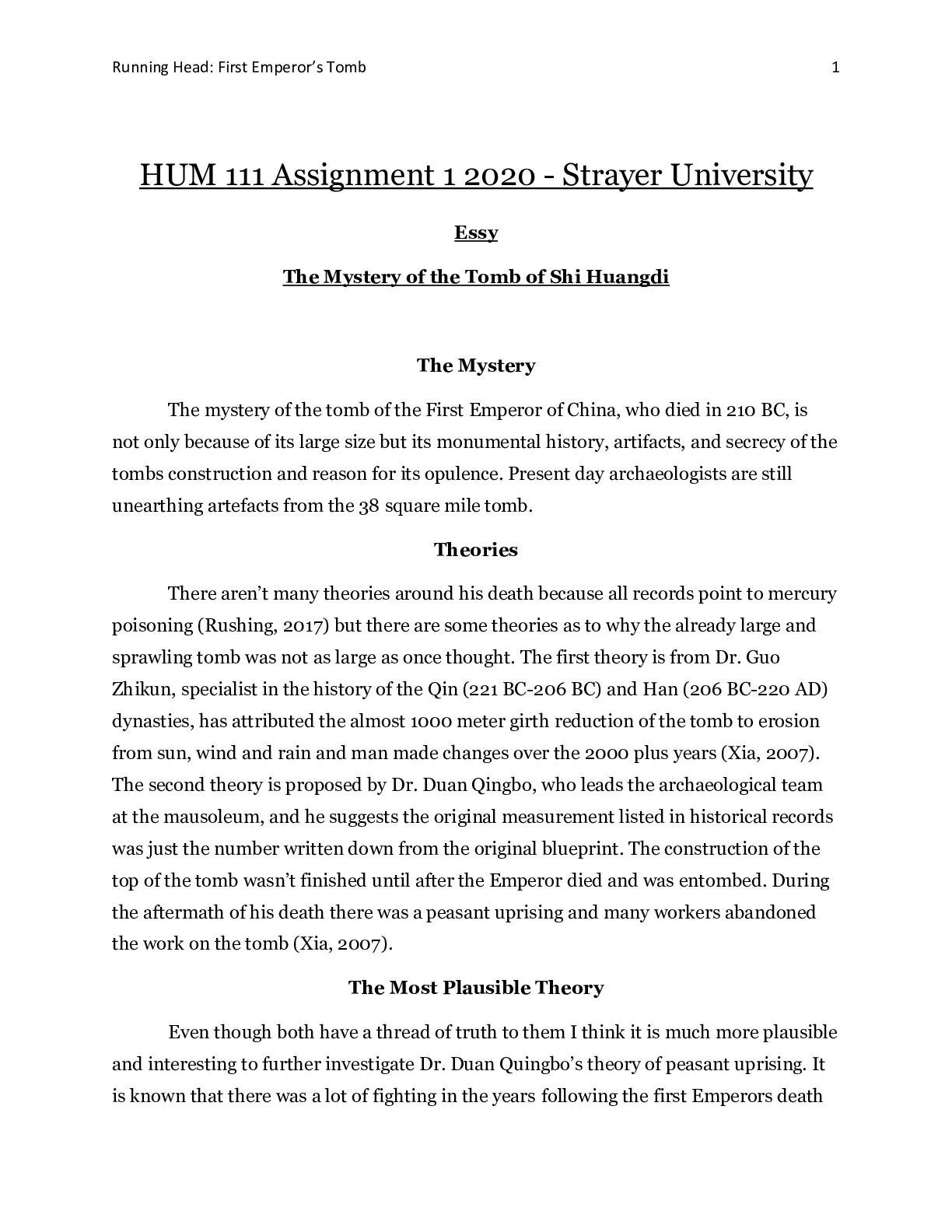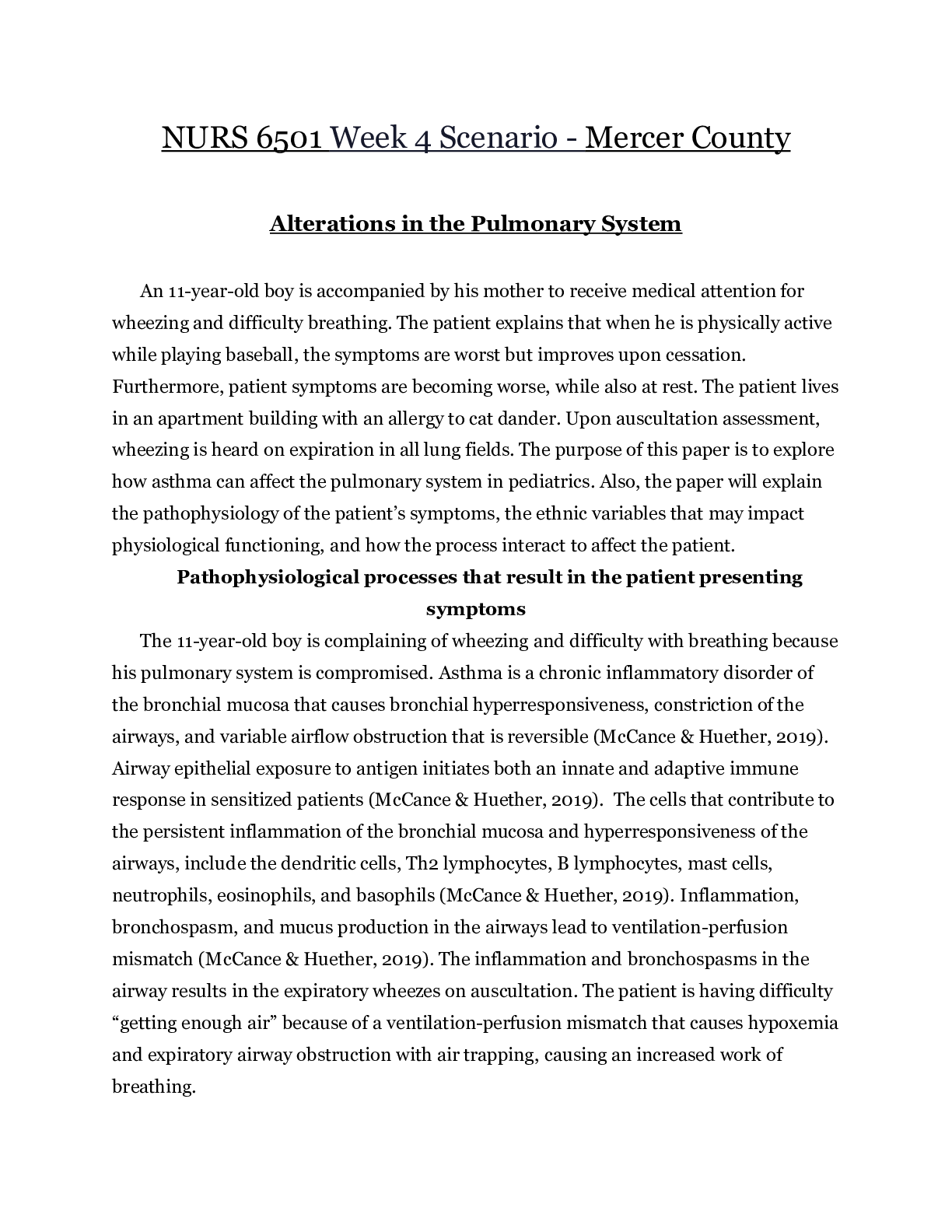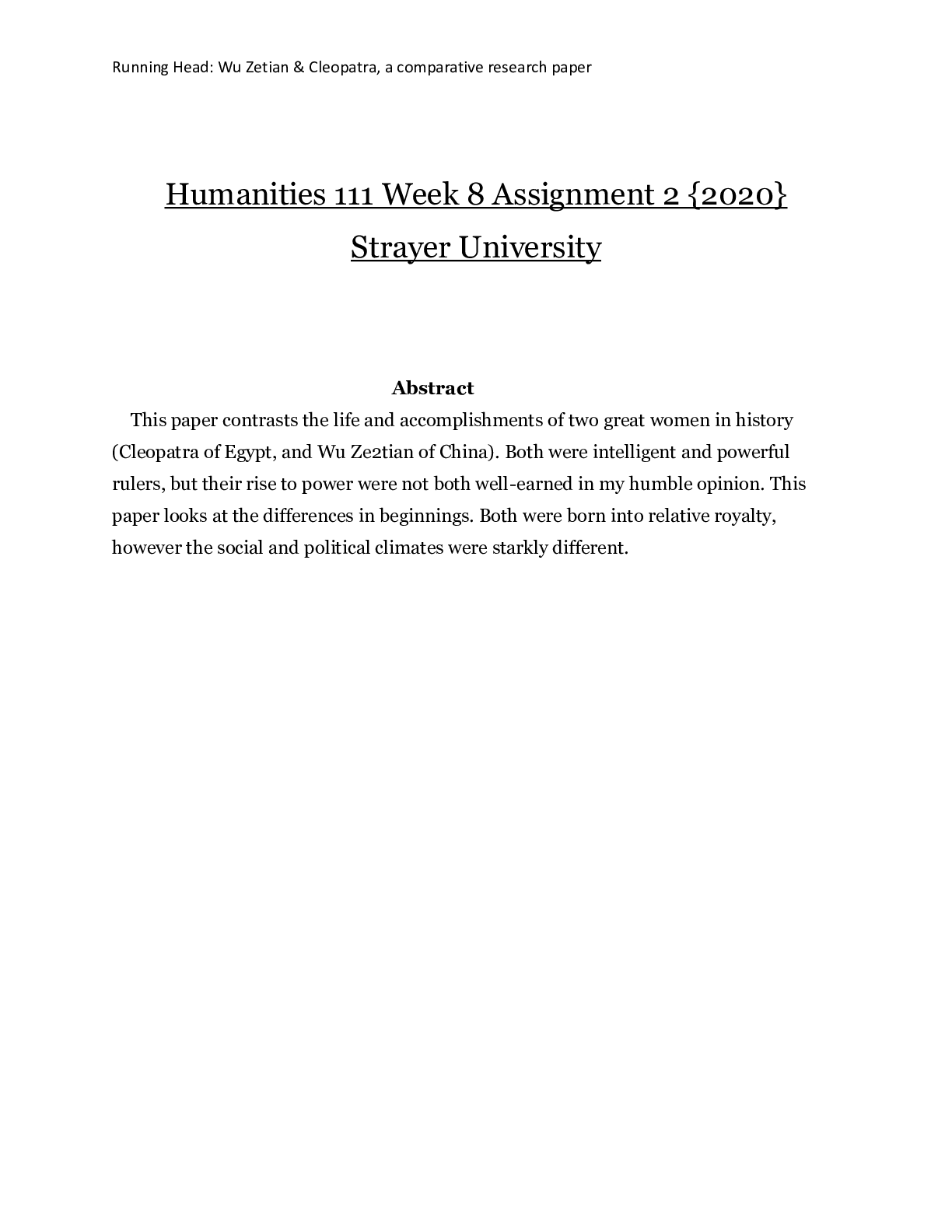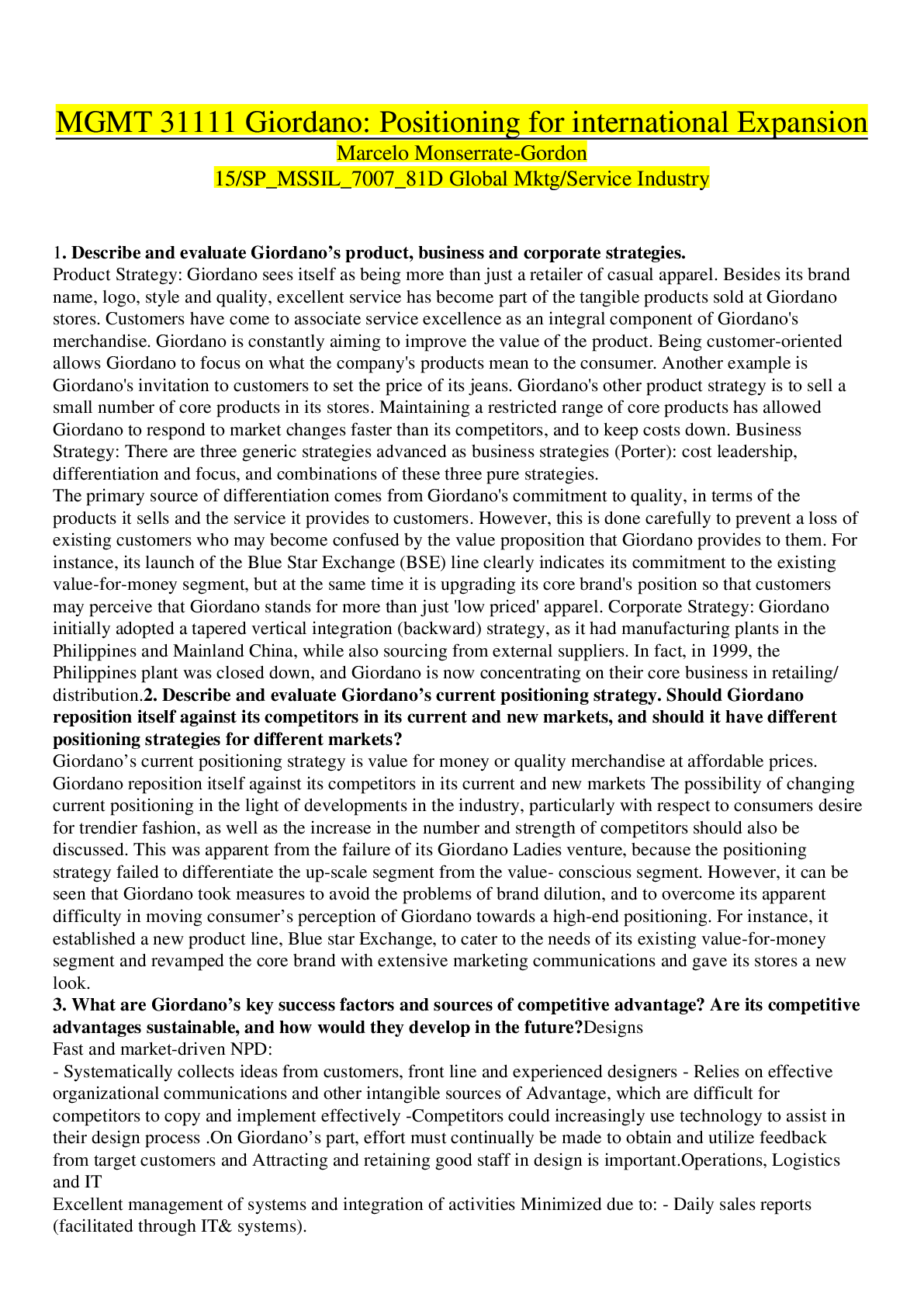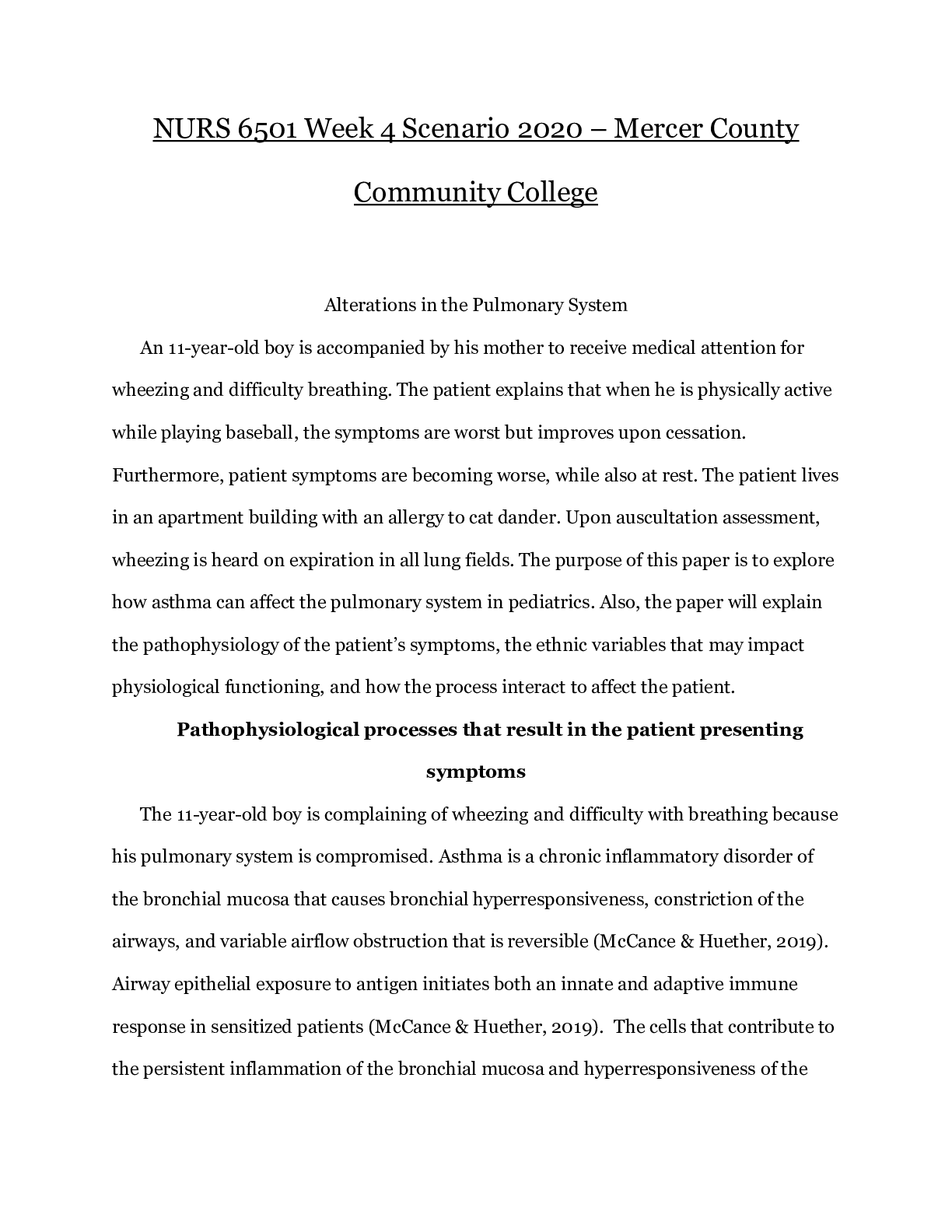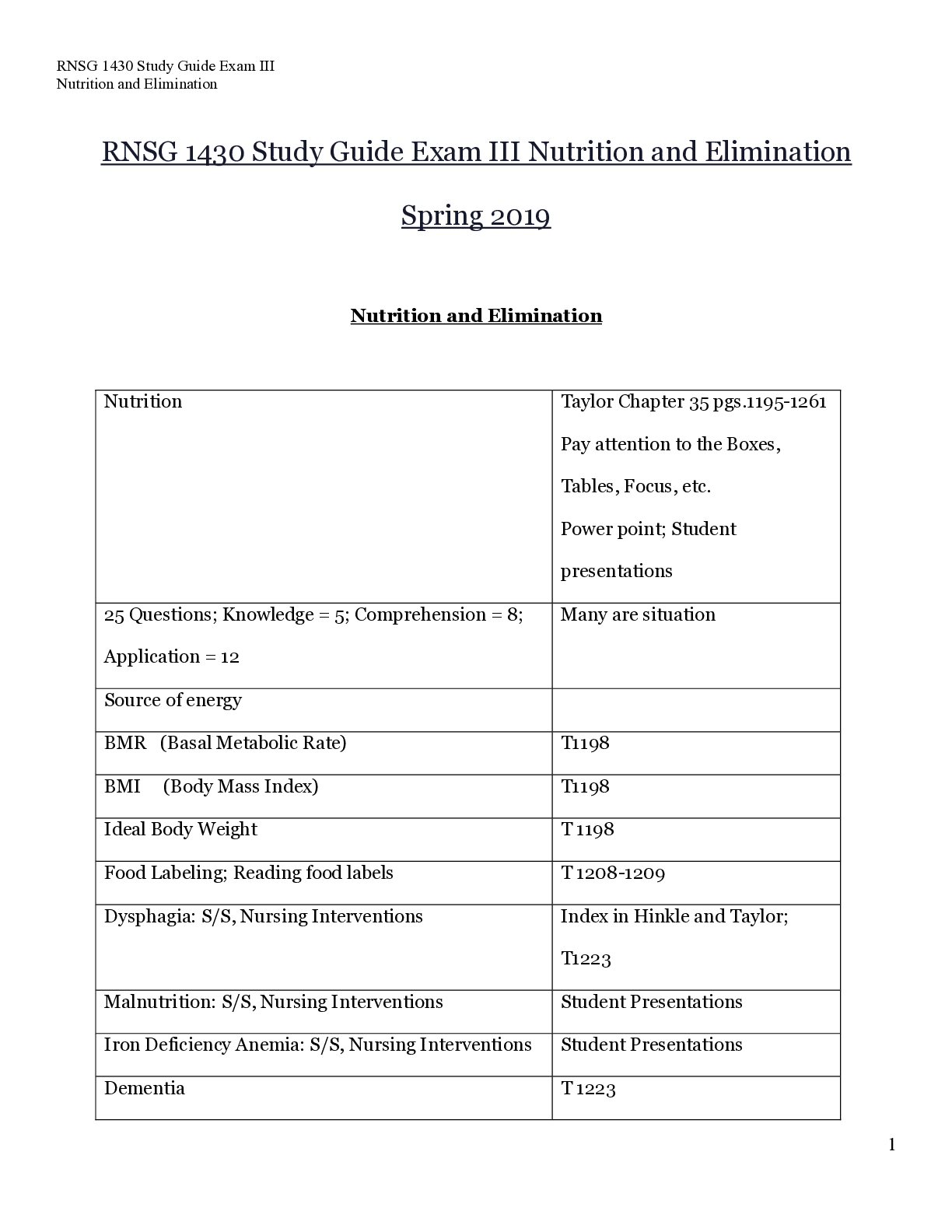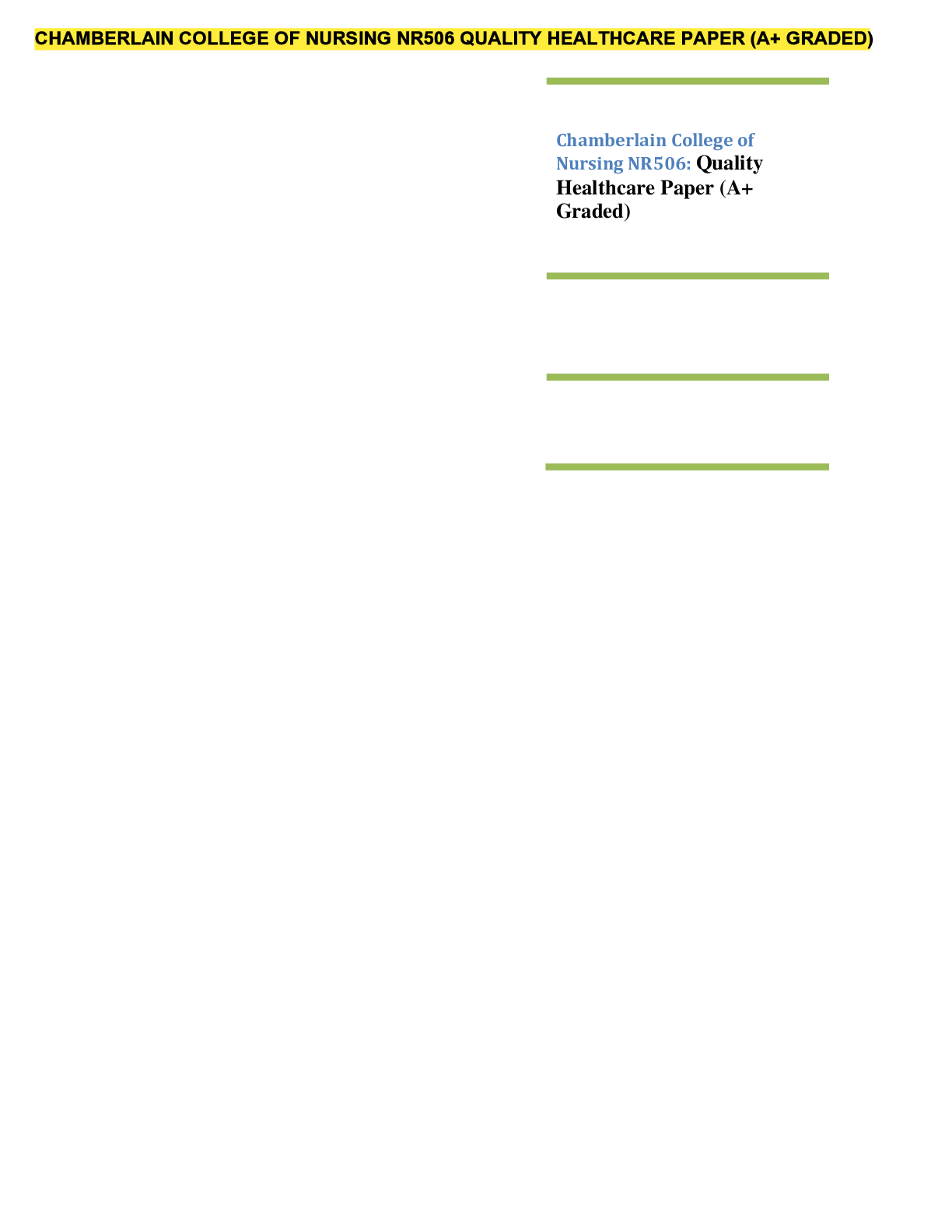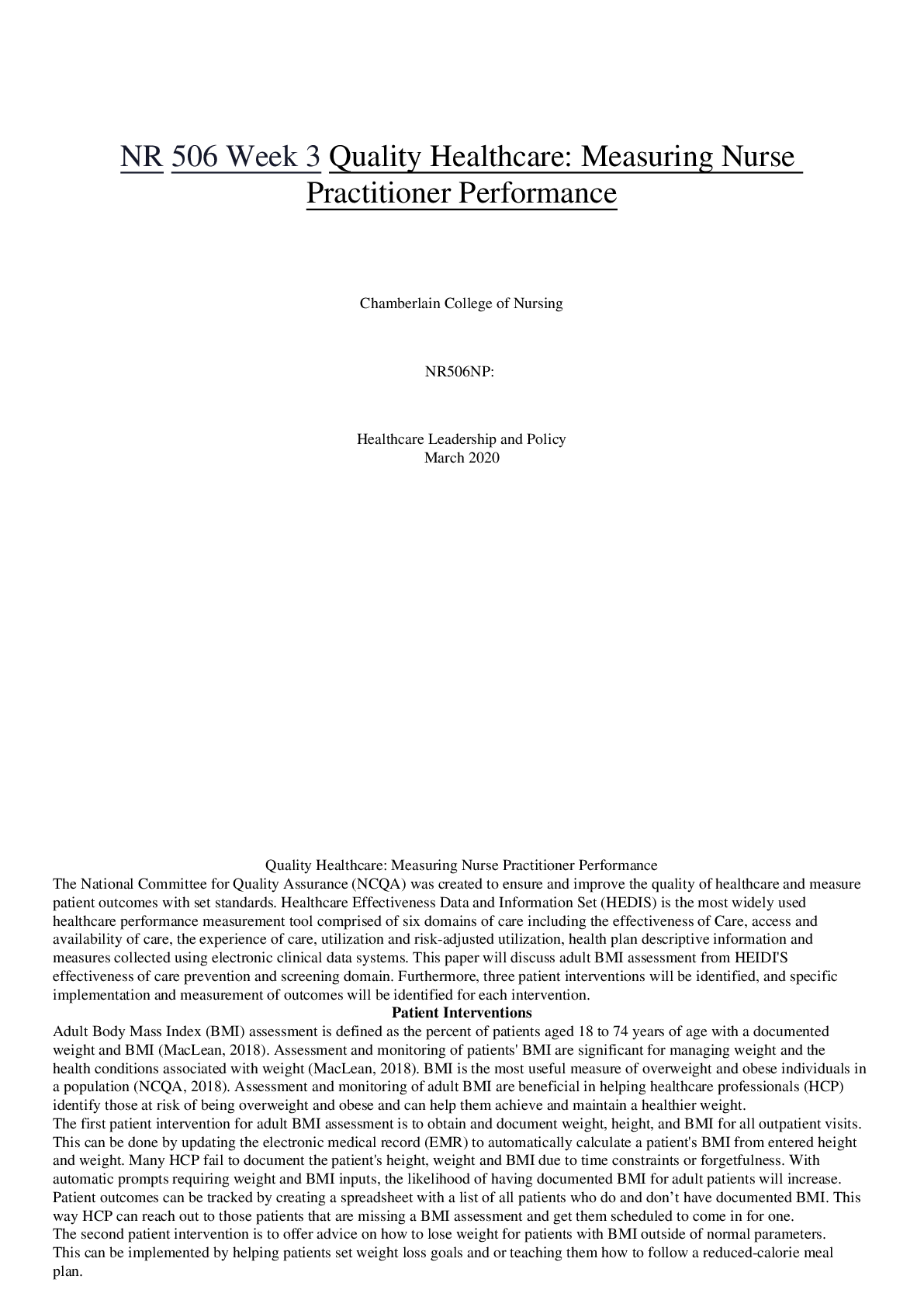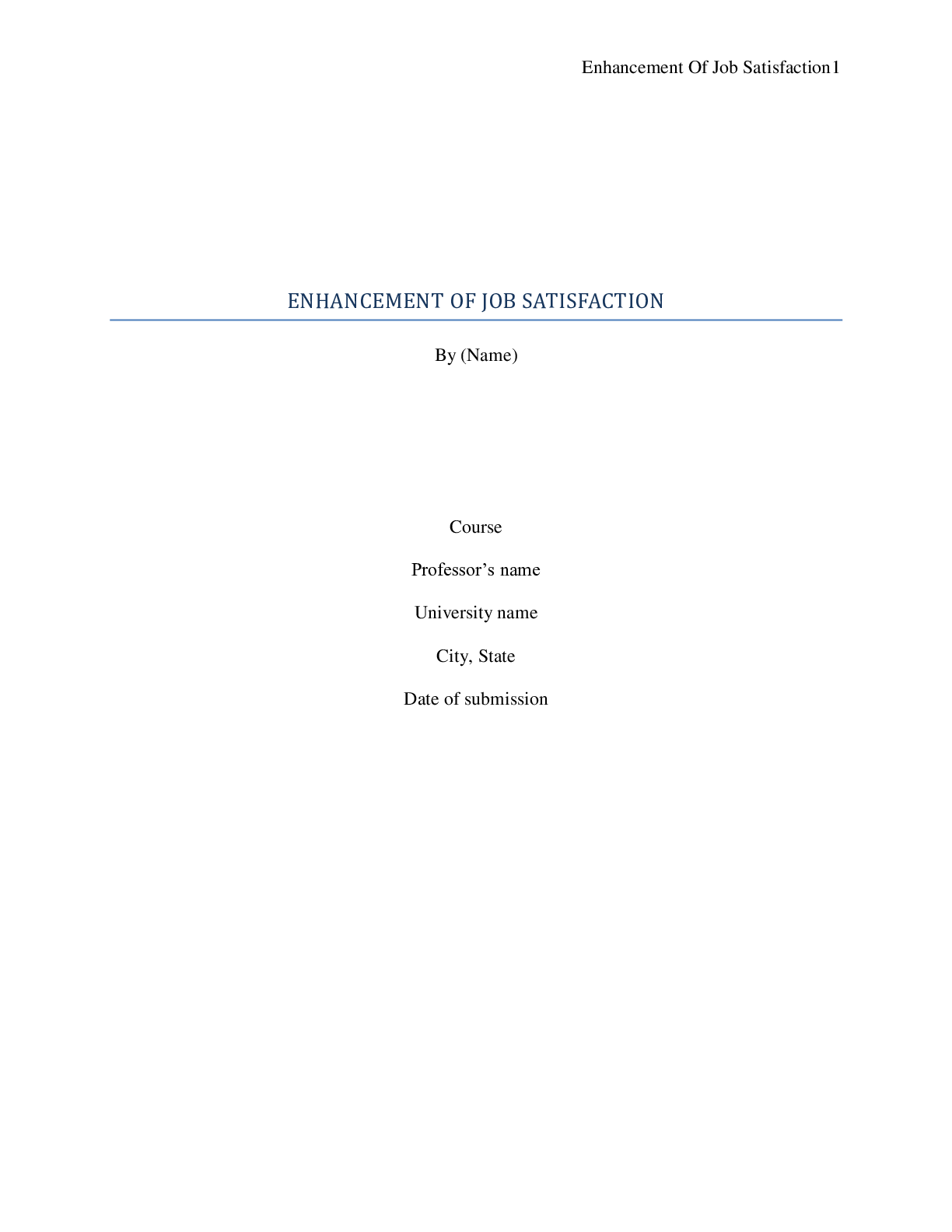*NURSING > ESSAY > NR 506NP Week 3 Paper_ Quality Healthcare: Measuring Nurse Practitioner Performance | NR506NP: Heal (All)
NR 506NP Week 3 Paper_ Quality Healthcare: Measuring Nurse Practitioner Performance | NR506NP: Healthcare Leadership and Policy
Document Content and Description Below
NR506NP Week 3 Paper_ Quality Healthcare: Measuring Nurse Practitioner Performance Chamberlain College of Nursing Professor Candice Phillips NR506NP: Healthcare Leadership and Policy S... eptember 18, 2020 Quality Healthcare: Measuring Nurse Practitioner Performance Every person should have access to quality healthcare and feel confident in the care they receive. The National Committee for Quality Assurance (NCQA) was formed to ensure the quality of patient care and measurement of patient outcomes with set standards This paper will discuss a performance measure developed by Healthcare Effectiveness Data and Information Set (HEDIS) in which is a performance measurement tool that millions of health insurance companies use (NCQA, 2019). Three patient interventions will be discussed, and information on how a nurse practitioner (NP) would specifically measure the outcomes of the interventions listed. This paper will include how the primary care interventions result in improved patient outcomes and cost savings for the practice. Lastly, this paper will discuss how the interventions resulted in improved patient ratings and a conclusion. Patient Interventions HEDIS has six domains of care in which performance in healthcare is measured. The interventions discussed will be from the domain Effectiveness of Care (NCQA, 2019). The three interventions selected from this domain are under prevention and screenings in which include: breast cancer screenings, cervical cancer screenings, and colorectal screenings (NCQA, 2019). As people age, screenings begin to play a significant role in their life. It is essential as healthcare providers that we make sure our patients are educated about the screenings and the importance of the screenings. Regardless of what the patient is being seen for, it should become a regular part of their assessment to ask them if they have had their screenings. If the patient falls within the age category or is high risk, and they have not had their screenings, it is important that we must get those scheduled for them while they are there. Breast cancer screenings or mammograms should occur every two years, beginning in average-risk women at the age of 40-50 years old and last through age 74 (HRSA, 2017). The Women’s Preventive Services Initiative recommends cervical cancer screening for average-risk women aged 21 to 65 years by getting cervical cytology (pap test) every three years (HRSA, 2017). Evidence of colorectal cancer usually shows signs around 50 years of age, and that is the age of screening recommendation begins for an average-risk adult (Hogstrom, 2018). The screening for colorectal cancer should happen once every ten years if each screening comes back clear, and family history is insignificant of colorectal cancer. - - - - - - - - - - - - - - - - - - - - - - - - - - - - - - - launched an initiative called Exceptional Patient Experience (EPE) that signifies medical care can only be truly great if the patient thinks it is (Lee et al., 2016). What began as a patient satisfaction initiative has evolved into a model for a cultural transformation that is focused on quality and safety, patient-reported outcomes, and cost reduction (Lee et al., 2016). This paper provides information on one of the six domains of HEDIS, a healthcare performance measurement tool. It includes patient interventions that fall under that domain and a way to measure each of the outcomes. Included are improved patient outcomes, costs savings for the practice, and patient ratings. - - - - -- - - -- - - - - - - - - - References Agency for Healthcare Research and Quality (AHRQ). (2019). CAHPS Patient Experience Surveys and Guidance. Retrieved from https://www.ahrq.gov/cahps/surveys-guidance/index.html#targetText=CAHPS%20surveys%20ask%20patients%20to,care%20for%20specific%20health%20conditions. Health Resources & Services Administration (HRSA). (2017). Women’s preventative services guidelines. Retrieved from https://www.hrsa.gov/womens-guidelines-2016/index.html Hogstrom, E. (2018, Mar 18). Health screenings encouraged. Telegraph - Herald Retrieved from https://chamberlainuniversity.idm.oclc.org/login?url=https://search-proquest-com.chamberlainuniversity.idm.oclc.org/docview/2015166834?accountid=147674 Lee, V. S., Miller, T., Daniels, C., Paine, M., Gresh, B., & Betz, A. L. (2016). Creating the Exceptional Patient Experience in One Academic Health System. Academic medicine : journal of the Association of American Medical Colleges, 91(3), 338–344. doi:10.1097/ACM.0000000000001007 National Committee for Quality Assurance (NCQA). (2019). Hedis measures. Retrieved from https://www.ncqa.org/hedis/measures/ World Health Organization. (2019). Cancer. Retrieved from https://www.who.int/cancer/prevention/diagnosis-screening/en/ [Show More]
Last updated: 1 year ago
Preview 1 out of 6 pages
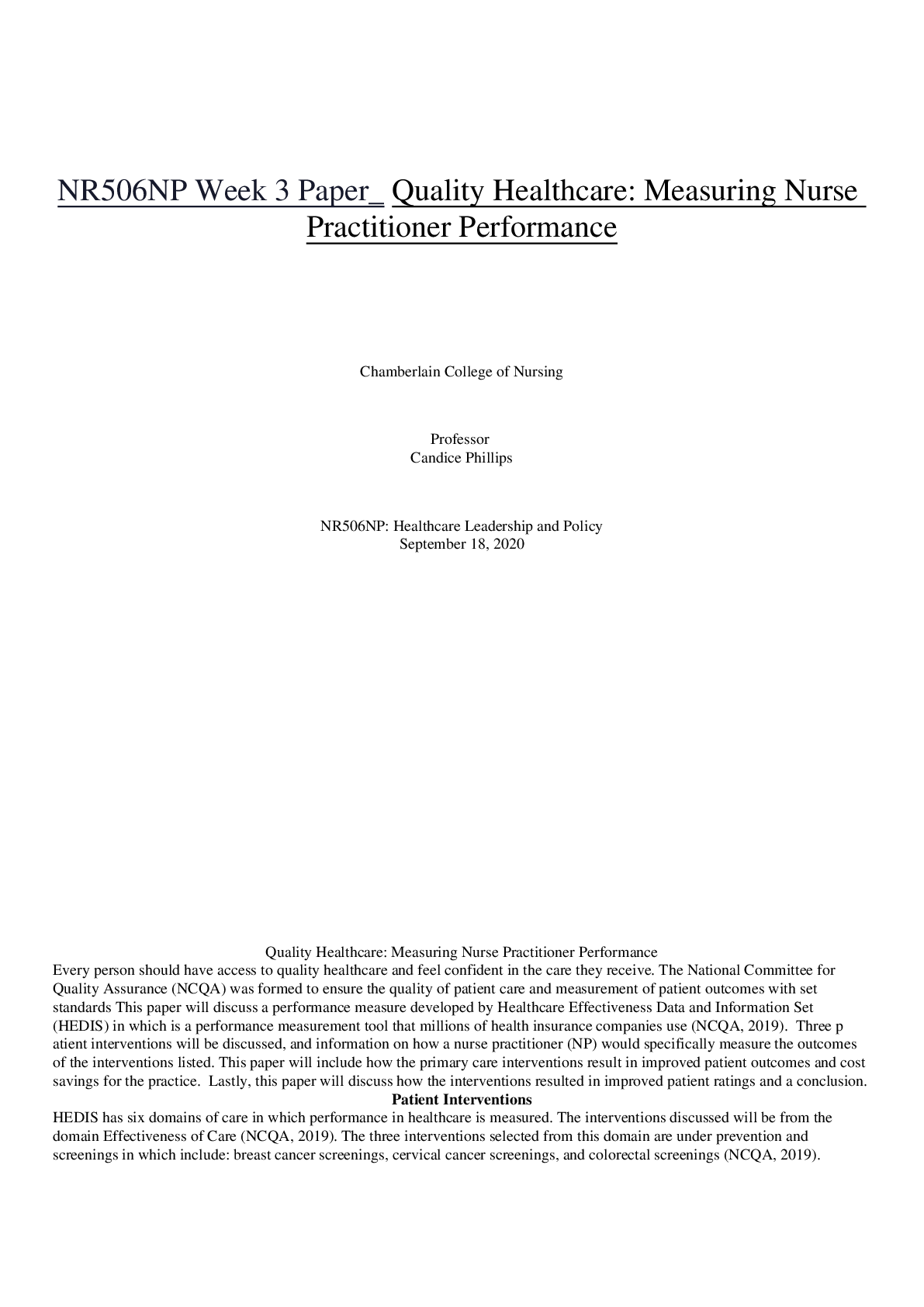
Reviews( 0 )
Document information
Connected school, study & course
About the document
Uploaded On
Jan 25, 2021
Number of pages
6
Written in
Additional information
This document has been written for:
Uploaded
Jan 25, 2021
Downloads
0
Views
67

